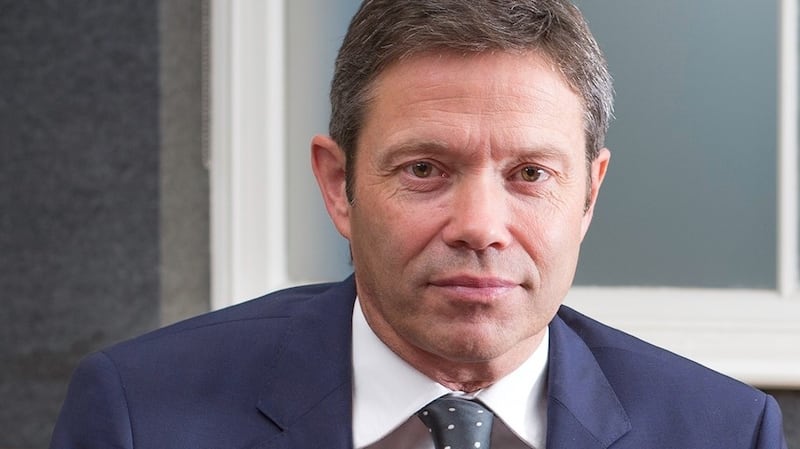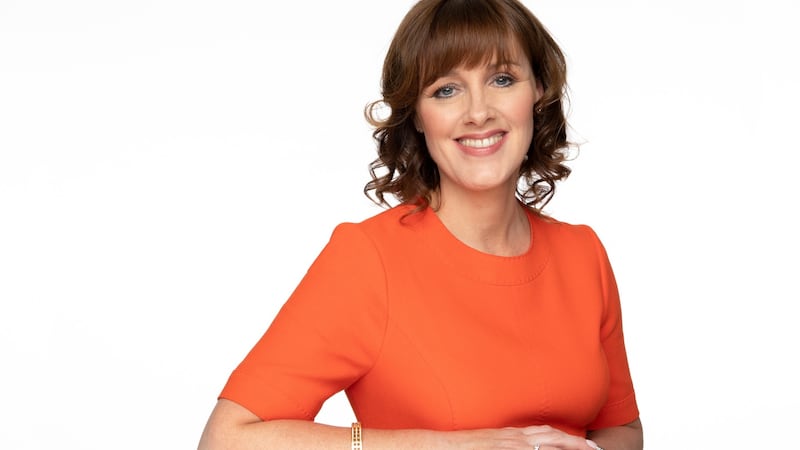Orla McMorrow, deputy chief executive at DNG Group
I believe that the market will remain robust next year, but the level of price growth will continue to moderate both in Dublin and nationwide, with low single-digit house price growth anticipated for the year ahead. The Irish economy remains well placed to weather the current headwinds of rising interest rates and inflation, which bodes well for the property market. A slowdown in the rate of price appreciation is widely expected, however.

We anticipate demand in the new-homes market will be underpinned in 2023 by the extension of the help-to-buy scheme until the end of 2024, and the new first-home shared-equity scheme. In addition, the recent changes to the macroprudential lending rules issued by the Central Bank, which take effect in January, are significant, as they increase the loan-to-income limits for first-time buyers to four times income and increase the loan-to-value limits for second-time buyers to 90 per cent from 80 per cent. As a result, we fully expect the number of residential transactions will exceed 2022 levels by 5-7 per cent.

David Cantwell, director at Hooke & MacDonald
The owner-occupier market should continue to be strong in the year ahead, with first-time buyers particularly active in the spring as they take advantage of the new mortgage rules. People will be prepared to travel further to acquire good-quality houses as a consequence of the changed working environment.
There will be a good level of second-hand rental properties coming to the sale market as small investors accelerate their exodus from the sector on account of the tax structure and ongoing increases in regulation.
READ MORE
Rising energy costs will cause more people to choose a newly-built home rather than an older one requiring renovation due to the increased awareness of the benefits of a good energy rating and the consequent cost savings.
Cost inflation will put further pressure on the delivery cost of new homes, with steel and timber posing the greatest problems and also the proposed new levy on concrete blocks. These all have an impact on what prices prospective homebuyers will have to pay.
The quality of new homes in terms of design, layout and amenities will continue to make them a popular option for homebuyers. However, there will continue to be insufficient supply to meet demand due to the rising population, which was clearly shown in the census.

Marian Finnegan, managing director at Sherry FitzGerald
After two turbulent years, hopes were high that 2022 would see a return to normality. Unfortunately, it was not to be. The war in Ukraine and the associated economic challenges have created more uncertainty.
That said, demand for all categories of property remained quite robust in 2022, with transaction volumes surpassing their pre-pandemic levels. Further growth to more than 60,000 transactions is expected for 2023, with particularly robust activity in rural and coastal areas.
For property, the most direct impact of uncertainty was on construction. While house completions are expected to reach 26,000 this year, the anticipated V-shaped recovery in supply is now less likely. As such, a significant supply deficit will persist.
After above-trend price inflation in the post-Covid era, 2022 saw a return to more moderate price growth, with prices expected to grow by 2-3 per cent in the year ahead.
Finally, the rental sector remains crippled by historically low supply, with enduring high levels of rental inflation.
There is no doubt that the accommodation crisis in Ireland is deep-rooted and complex. However, if I had one wish for 2023, it would be a bold policy response to address the supply deficit. Without this I fear another year of discontent for potential purchasers and tenants.

Stephen Day, senior director of residential sales at Lisney Sotheby’s International Realty
We sign off on 2022 seeing a correction in the fizzy market growth we have been experiencing over the last decade and particularly since Covid. What was a sellers’ market is becoming more of a power share with purchasers more price sensitive. We are seeing fewer instances of frustrated buyers bidding far in excess of the asking price to secure a home. There is a touch of uncertainty in the air brought about by a number of factors, with the most recent being interest rate hikes.
The number of properties for sale in Dublin has increased by 15 per cent since January, fuelled in no small measure by weary landlords selling their buy-to-lets as life as a landlord has become too challenging for many. At the higher price points, we are still seeing significant sales occurring off-market. These types of transactions often have international buyers playing an important role.
Over the last few years there has been a material decline in the number of bank sales where mortgages were long in arrears since the 2008 crash. More recently a scattering of these have crept back into the market but it remains to be seen whether this is a reflection of the current situation or the rumbles of a potentially bigger issue beneath the surface. It’s likely to be the former, given exceptionally strong employment levels.
With further interest rate hikes expected and buyers’ enthusiasm starting to cool, we don’t expect to see a bounce in 2023. Commentary on market predictions globally is very mixed. It’s not clear where the axe will fall but in Ireland we are still seeing plenty of cash in the market and we don’t expect a dramatic decline in pricing heading into 2023.
The stability of the market is riding on bigger political and economic issues domestically and internationally. With pricing very sensitive, the right sales advice is more important than ever. Timing of sales and when to bring a property to the market will be heightened in importance next year. Vendors will be looking to both sell and buy in the same market. Many will want to sell quickly, nervous of any marked decline in value between them trading up or down. Buyers will throw their weight around a little more and, therefore, choosing the right buyer and careful negotiating will be key to getting sales across the line next year.

Pat Davitt, chief executive at the Institute of Professional Auctioneers and Valuers
The past year has marked another 12 months of growth for Irish property, with most prices increasing by about 8 per cent. I would say about 27,000 new properties will have been built by year end. As we look further afield to 2023, a different picture is forming.
I see a flat first six months with less activity in the new-homes market, especially apartments, with commencements down on 2022 to somewhere in the region of about 20,000 – a long way off what is intended by the Government.
The reasons are multifaceted, including the huge and increasing government tax take, planning costs, the new concrete levy and the new residential property zoned tax. Looking at policy, a real problem is the myriad of bodies and agencies working on separate agendas, often lacking quality data and insights and sometimes fearful of doing the right thing, be it because of political concerns or otherwise.
To make any real impact this will have to change. After all, there is unanimity on the issue among all interests that more homes need to be built, and at more affordable prices.

Guy Craigie, director of residential property at Knight Frank
Our residential teams have witnessed several key trends this year. There has been a significant uplift in cash purchases – particularly for prime properties – with those investing due to the sale of successful businesses; high-net-worth individuals trading up; and Irish people returning home who have made significant income abroad and know prime stock is in limited supply.
There has been a noticeable increase in demand for city-centre properties as people return to the office. Traffic, commute times and overall lifestyle preferences are the drivers of this trend. The appetite to purchase an older home requiring renovation has diminished with buyers seeking turnkey, energy-efficient homes due to the cost of renovation, a lack of available building contractors and rising energy costs.
Demand for new homes has been incredibly strong across all price points. Ongoing challenges with the planning system mean the lack of supply will continue indefinitely. Government incentive schemes such as help-to-buy and the first-home scheme are helping first-time buyers, however, only a modest number of those approved have been able to find suitable homes.
Tight supply across the market continues to act as a problem for downsizers also, many of whom will not sell without having a home to move to because of the lack of availability of bridging finance.
All these factors combined mean further house price rises are likely in 2023, with Knight Frank forecasting growth of about 5 per cent.

David Browne, director of new homes at Savills Ireland
Several factors are in play that will underpin the strength of the new-homes market next year, which include a loosening of Central Bank rules from January, along with additional Government initiatives introduced this year.
For example, first-time buyers will be able to borrow up to four times their income – up from the previous limit of 3.5 times income – while second and subsequent buyers will now be able to borrow up to 90 per cent of the property value, up from 80 per cent previously.
This, combined with the first-home scheme – launched earlier this year –, will likely increase the number of first-time buyers in the market and will continue to support the demand for new homes. As affordability is restricted, the demand for apartments, duplexes and town houses will likely increase.
As rents continue to hit record highs, those who can avail of a mortgage and buy their own homes will do so because, in the majority of cases, most people will be better off financially if they buy.
Soaring building costs, which have pushed up the cost of renovating older properties and have made the banks more cautious about lending money towards the purchase of such properties, are also prompting more house-hunters to pursue energy-efficient new builds.
As a result, new builds are standing firm as the favourite of house-hunters today and we expect this to continue for the foreseeable future.

Joanne Geary, managing director at MyHome.ie
It has been a year of two halves for the residential property market. The first half of the year saw continued runaway asking price inflation and more vendors returning to the market.
In the second half, inflation cooled and we saw consumer sentiment affected by rising interest rates, cost-of-living concerns and rental market dysfunctionality.
Thankfully, supply is improving; the number of properties available for sale on MyHome.ie rose by 33 per cent year on year even though we are still 20 per cent off the comparable 2019 figure. Meanwhile, demand is still robust, with enquiries up by 20 per cent compared with this time last year.
However, there are clouds on the horizon. The volume of price drops on MyHome.ie is rising and a property’s time on the market before a price drop has tightened from 22 weeks (2021) to 17 weeks (2022).
As such, we expect to see a further slowdown in asking-price inflation, even though supports such as the first-home and help-to-buy schemes and the imminent easing of Central Bank lending rules will help prospective buyers.
As ever, we look to the Government and the construction activity to help us deliver the supply so badly needed in all sectors of this marketplace.

Shirley Coulter, chief executive of the Society of Chartered Surveyors Ireland
The likelihood of additional interest rate hikes, the continuing exodus of private landlords from the private rental market and a move away from property by institutional investors are the three factors that members believe are set to dominate the Irish property landscape into next year and beyond.
SCSI agents believe this will lead to price stabilisation next year, with low single-digit figure increases. Many will view this as a positive as the increases we saw in early 2022 were not sustainable. Schemes such as help-to-buy and others will be key in supporting first-time buyers.
Well-presented houses in good condition that are priced correctly will continue to perform well when placed on the market for sale. Also, energy-efficient homes are much sought after, especially given the energy crisis and the unprecedented rise in prices.
Landlords look set to exit the market in increasing numbers, especially when the eviction ban is lifted. With construction inflation continuing to rise and institutional funds being diverted away from property, we are unfortunately seeing more private rental and build-to-sell schemes being put on hold because they are no longer viable.
This will exacerbate the lack of supply of new properties for rent and sale and could lead to a significant shortfall in housing in 2024 and 2025, compromising the Government’s Housing for All targets. While the outlook remains challenging, there will be opportunities for local authorities to step in and complete schemes which have planning permission, and this would be a welcome development.













